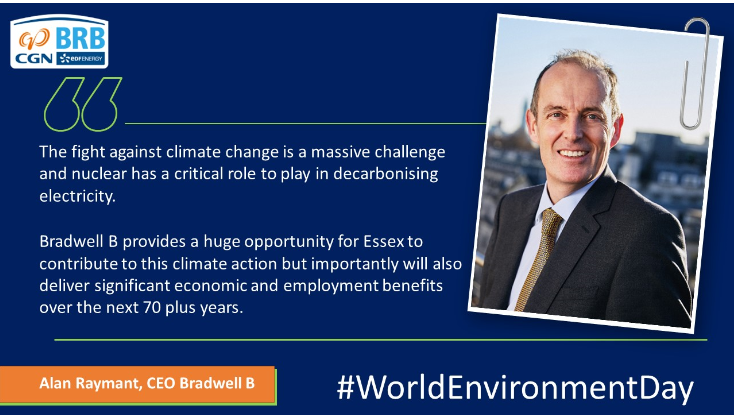Net zero needs nuclear
Climate Action, Low Carbon, Carbon Neutral, Net Zero. We hear these phrases all the time, but do we really understand what it will take for the UK to play its part in the fight against climate change?
With tomorrow (5 June) being World Environment Day we want to explain how nuclear is essential to cutting carbon emissions in the UK and the considerable benefit Bradwell B in Essex could bring.
Meeting energy demand
To date the UK has lead the way on climate action, through the Government’s cornerstone target of net zero emissions by 2050. Most recently, it announced a further commitment to cut 78% of carbon emissions by 2035, based on 1990 levels.
The growth in electric vehicles, and the need to move away from using natural gas for heating, means that the UK’s electricity demand will double by 2050. At the same time, coal-fired power stations and the existing nuclear power stations are retiring which means we needs new, low carbon generating capacity.
Renewables provide an important part of the solution. The UK needs flexible renewables sources like wind and solar, but they don’t generate when the wind doesn’t blow, or the sun doesn’t shine, with no deployable storage technology of significance. The UK does not have the capacity for significantly more hydropower, so low carbon baseload must come from nuclear.
The role of Essex
Essex County, looking at what role it can play in the move towards net zero, launched the Essex Climate Action Commission last year. Whilst this is positive, there is no doubt that the County’s single biggest contribution to net zero would be Bradwell B, Essex’s proposed new nuclear power station.
The original Bradwell power station generated nearly 60 terawatt hours (TWh) of low carbon electricity during its lifetime – collectively enough to power 15 million homes for one year.
Bradwell B will generate far more electricity with far less fuel. When operational it will produce 2.2GW of electricity, enough electricity for four million homes for at least 60 years, and would be by far the single biggest climate positive act in Essex.
East of England the Low Carbon Region?
In recent analysis, conducted by the Nuclear Industry Association of 2020 data published by National Grid, the East of England region missed the UK’s 2030 electricity decarbonisation target of 50-100g CO2/kWh on 70% of days. Although benefiting from the existing Sizewell B nuclear power station in Suffolk, the region has still only been averaging 143g a day. It is clear more low carbon generation capacity is required.
The proposed Bradwell B and Sizewell C nuclear new build projects, which will produce 5.4GW of clean, low carbon electricity collectively, are a key part of the answer to helping the UK achieve its 2050 net zero targets.
Alan Raymant, CEO of Bradwell B, said, “The fight against climate change is a massive challenge and nuclear has a critical role to play in decarbonising electricity.
“Bradwell B provides a huge opportunity for Essex to contribute to this climate action but importantly will also deliver significant economic and employment benefits over the next 70 plus years.”

